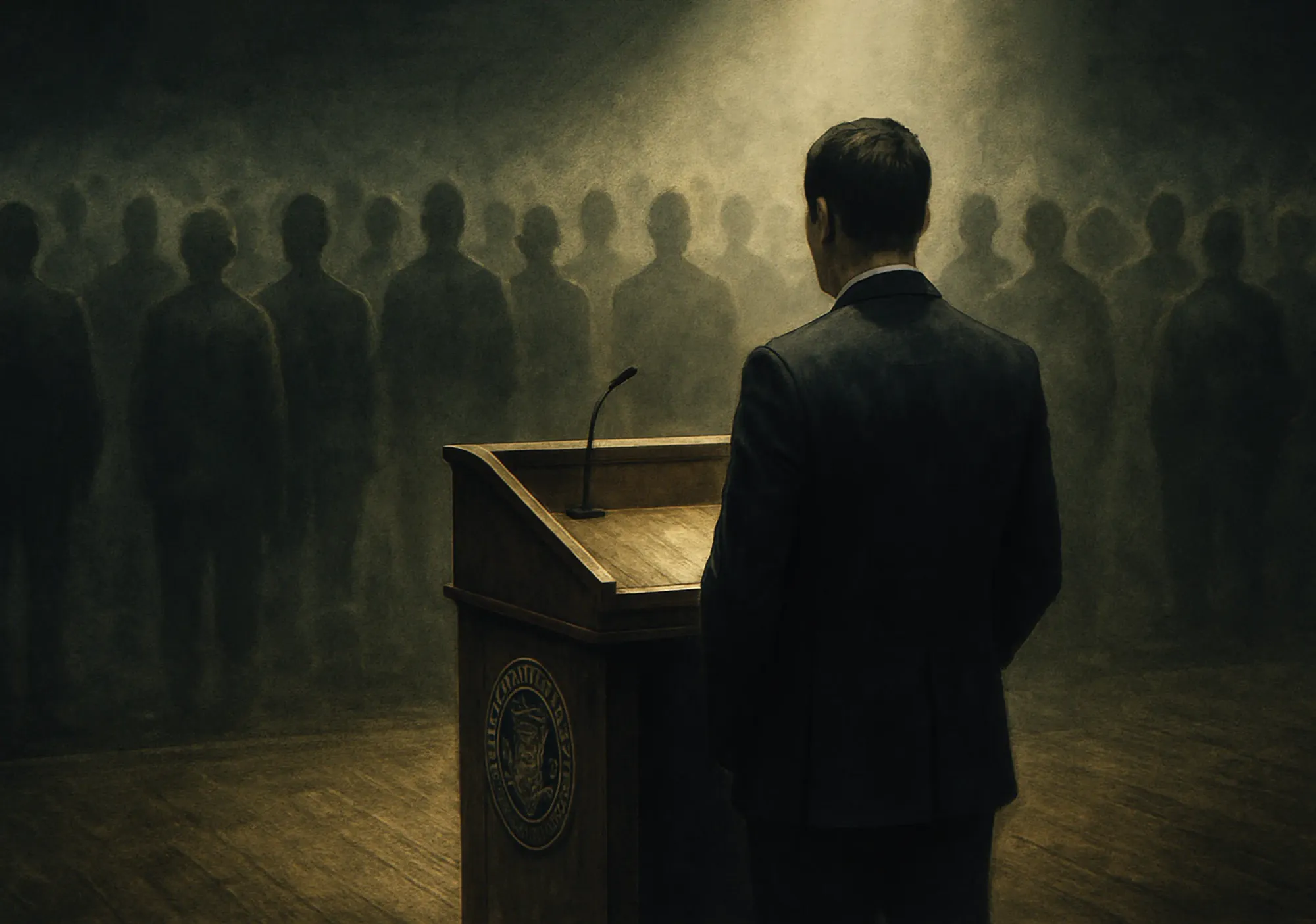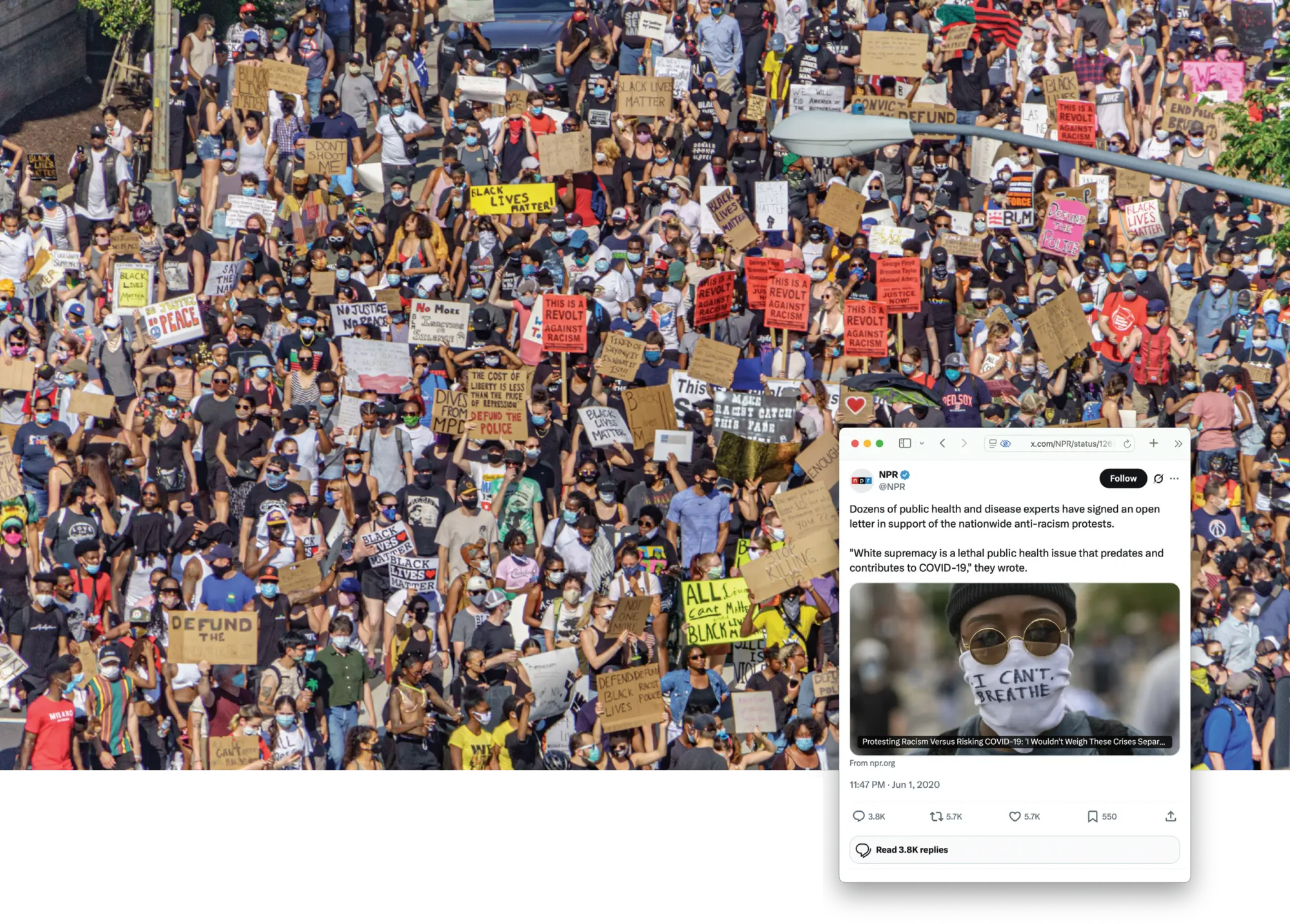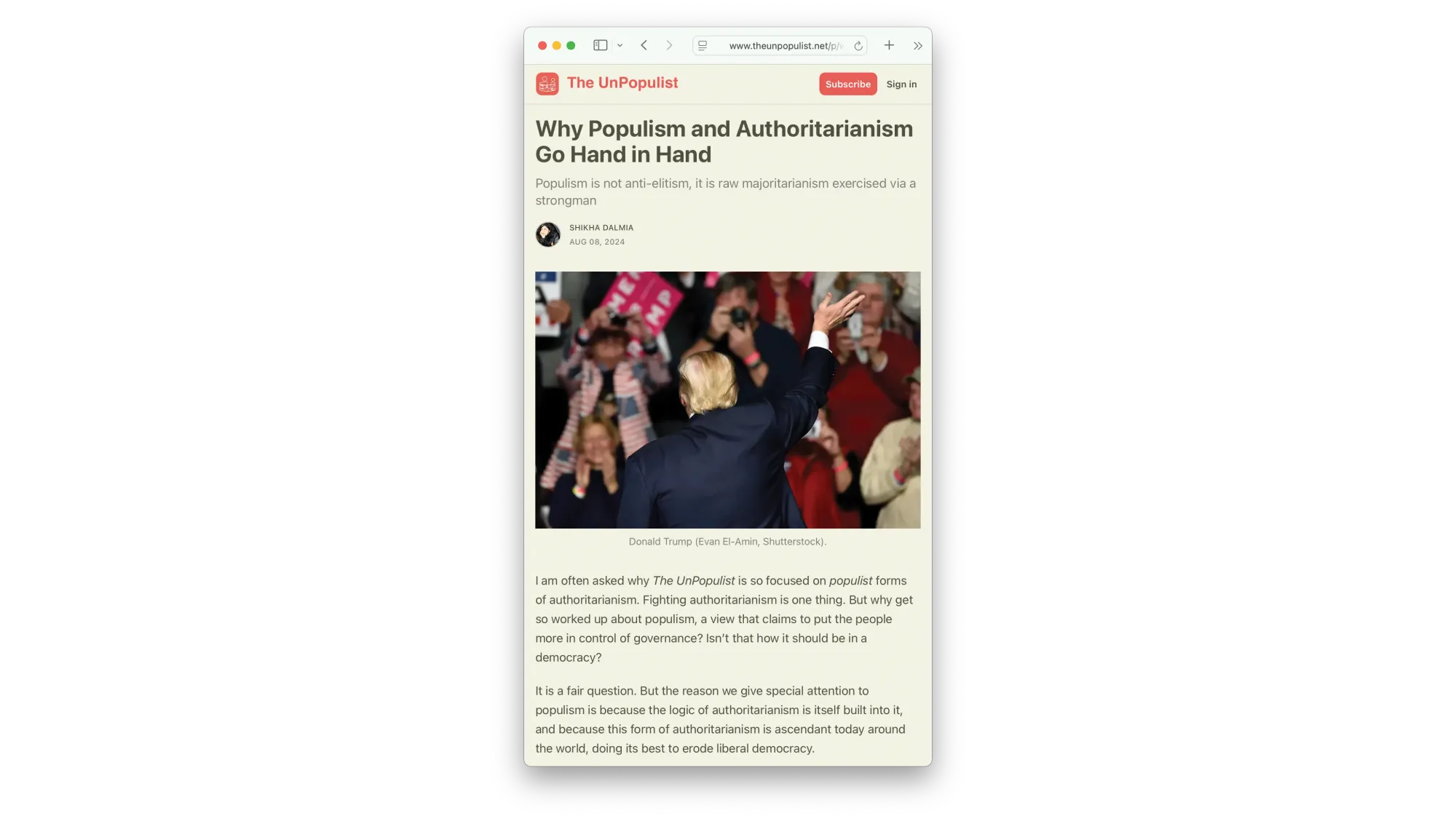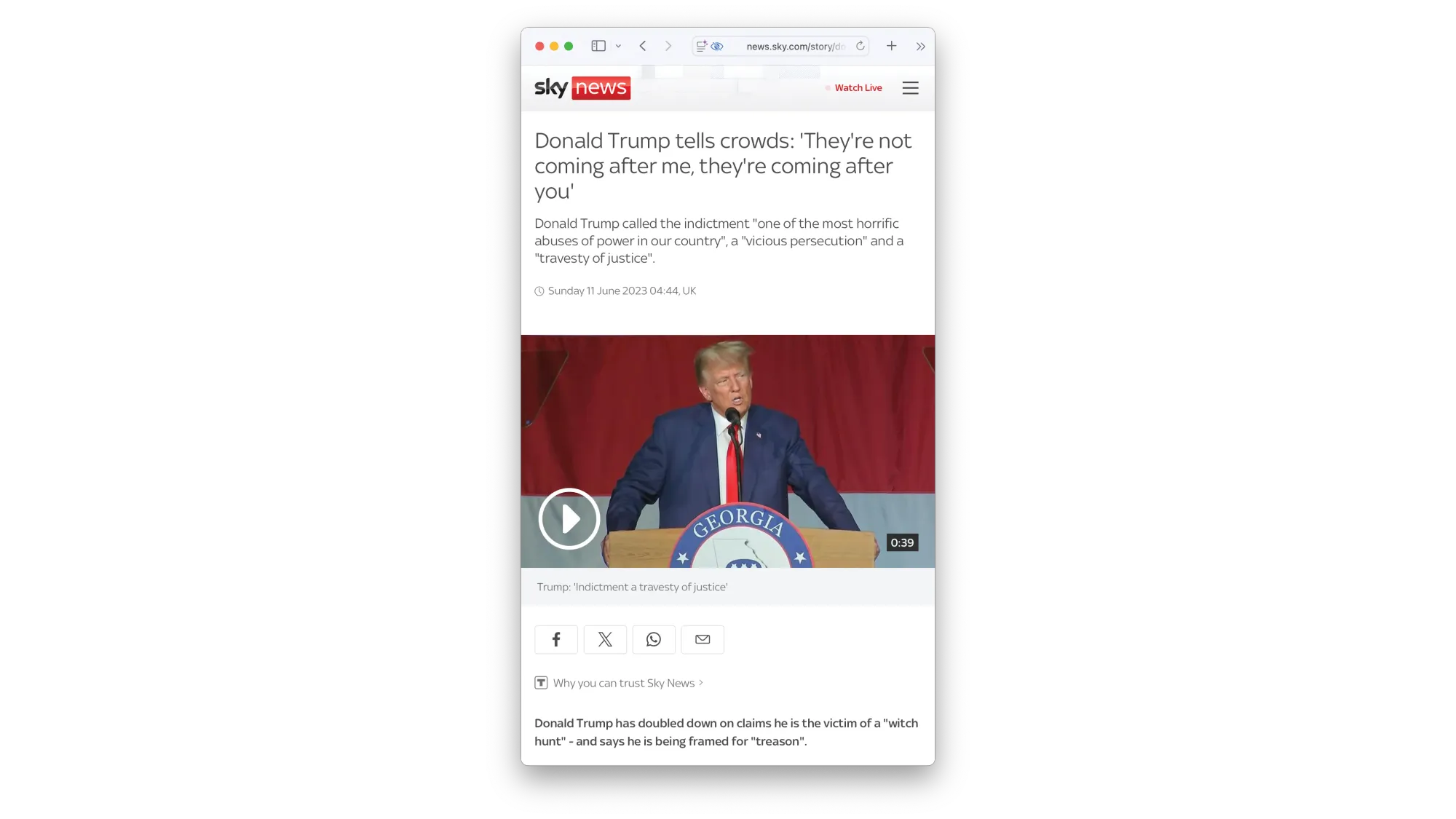When the Noblesse Does Not Oblige: Why and How the Working Class Grew Skeptical of the Experts

Noblesse Oblige is a French phrase that refers to the obligations the nobility had to the common people to make them worthy of their immense relative privilege. People will tolerate inequality if they sense that those with more are looking out for them and have their best interests at heart. However, many people in America do not feel that our American elites, whether it be on Wall Street, in the government, in our scientific institutions, or in our universities now even pretend to care about their well-being. Thus, there has been a decade-long revolt against science and expertise, which has reshaped American politics, fueling populism, antivaccination movements, and Donald Trump’s Make America Great Again (MAGA) and Make America Healthy Again (MAHA) coalitions. This rebellion stems from a profound crisis of trust in our public institutions (e.g., universities, public health agencies, political parties, etc.) that have failed to address working-class economic and cultural anxieties. The Democratic Party, once a labor stronghold, has lost major ground to Republicans, with 56 percent of voters without a college degree, 55 percent of men, and 57 percent of White voters supporting Trump in 2024.1 This shift reflects a broader realignment driven by deep distrust and alienation. While I do not offer a comprehensive list of every variable feeding this system, I submit that some of the major factors at play are public perception of education, transgender issues (particularly where minors and issues of consent are involved), and the COVID-19 pandemic, which saw governments wield draconian authority only to ease all restrictions after the death of George Floyd and the ensuing protests and riots.
First, the professoriate are supposed to be the experts, possessing in-depth knowledge, who are dedicated to the pursuit of truth above all else. However, the stories that enter the public’s consciousness (especially on the right side of the political spectrum), are often more about progressive activists putting their advocacy as their highest goal. This has led to a collapse in public confidence in higher education, which has plummeted from 57 percent in 2015 to 36 percent in 2023, particularly among Republicans, whose confidence dropped precipitously from 56 percent to 19 percent, citing perceived political bias and declining degree value as reasons.2 This has coincided with decreasing trust across all institutions that are supposed to make up our “expert class,” such that between 2022 and 2024 trust in the federal government fell from 35 percent to 23 percent in one poll, with only 15 percent of respondents saying that the government is transparent.3
Second, as Andrew Sullivan, himself openly gay and a longtime advocate for gay rights (particularly same-sex marriage), pointed out so well recently in The New York Times,4 the culture war issues around the LGBTQIA+ community, particularly where consent isn’t considered necessary, have forced a lot of people in the expert class to publicly endorse and mandate beliefs that much of the working class doesn’t share. A common refrain or insult by conservative nonacademics to academics on social media is, “you think men can get pregnant,” which then forces those academics to either adopt a position many nonacademics will find ridiculous, or risk the wrath of progressive activists who can, and sometimes do, get people blacklisted or even fired.
Third, the COVID-19 pandemic amplified distrust, as shifting narratives on masks, lockdowns, and vaccines, alongside coercive mandates, alienated many. In the span of several years people were mandated to get a vaccine they weren’t sure about, kept apart from loved ones, and some faced arrest for playing in a park or on a beach by themselves or with just the people in their immediate family, only for the experts to declare that none of those rules were important any longer if people wanted to protest. Decreasing media credibility didn’t help, especially with striking examples such as when CNN ran a crawl that read, “Fiery But Mostly Peaceful Protest” over footage of burning buildings and cars, or that an NBC reporter stood in a NASCAR stadium full of people clearly chanting “F#@k Joe Biden!” and told everyone at home, with a straight face, that the crowd was chanting, “Let’s Go Brandon!” Between COVID and biased and dishonest media, the last five to ten years have been a Kafkaesque circus in many people’s eyes, which is undoubtedly one of the drivers of collapsing trust in experts, the Left, and the Democratic party as a whole.
Cultural flashpoints, such as gender ideology, seen as detached from empirical reality, further entrenched skepticism among working-class voters who have come to view “experts” as a bunch of elitist clowns. I argue that this revolt, while deeply flawed and occasionally moronic, is a rational response to perceived authoritarianism and institutional betrayal. The Democratic party’s, especially it’s progressive wing’s, focus on identity politics and technocratic solutions has alienated many people among the working class, European Americans, minority members who have assimilated into the mainstream, and traditional-values families, prioritizing niche agendas over economic struggles.
The “color line,” W.E.B. Du Bois’s term for racial divides,5 has increasingly turned green, reflecting economic and educational divides rather than solely racial identities. Note that Trump’s winning 2024 coalition grew more racially diverse from his 2016 and 2020 campaigns, with 48 percent of Hispanic, 15 percent of Black, and 40 percent of Asian voters supporting him in that election.6 This shift reflects a realignment where Democrats have lost their traditional working-class support to populism.
Collapsing Trust in Higher Education
My forthcoming book, A Climate of Mistrust: How Higher Education Polarization Leads to Skepticism About Climate Change (and Everything Else) traces the history of the various social and administrative forces that have led to our current campus crises.7 Building upon Nancy Fraser’s concept of progressive neoliberalism,8 I argue that the core of the crisis is that progressive activists have completed a Gramscian “long march through the institutions” and now have control over the administrative centers of power throughout education. With that achieved, they have been making a full-throttled approach to achieve the goals of Diversity, Equity, and Inclusion rooted in the Critical Theory tradition, which sought to bring about an antiliberal revolution.
Activists in the faculty and administration want to hire fellow activists, to only promote research that supports their politics, and create speech codes that limit the ability of nonactivists to dissent, and drive off (i.e., “cancel”) anyone they perceive as a threat to those political goals. Not only do I know this from having written my dissertation and forthcoming book on the subject, but also because I became the first adjunct instructor to be the subject of an American Association of University Professors Committee A investigation for protesting my then-college’s plan to increase the retention rate by mandating lowered standards, mandating minimum pass rates by race and sex, and limiting me to assigning students no more than eight total pages per semester in the Philosophy course I taught.9
The problem for the universities is that, as neoliberal institutions, they have legal and regulatory responsibilities to generate revenues and serve the general public. Administrators try to increase funds by increasing costs to students, making as many faculty members into part-time adjuncts without benefits, and keep donors’ money coming in. However, trying to use universities for both of these purposes simultaneously has led to contradicting nexus of policies at cross purposes with one another. Campus activists denounce “whiteness;” call for the intifada against Israel to be globalized; label masculinity “toxic;” refer to America as a settler-colonial project that needs to be dismantled; openly practice discrimination against Asians, Jews, and Whites, etc.; while at the same time needing the support of those groups in terms of donors and of maintaining political support for the state and federal elected officials who have a powerful sway over university budgets and accreditors. Whether at the U.S. Supreme Court or in the ongoing battles with the Trump administration, whether it’s protesters being punished or university presidents being fired, these ongoing feuds have taken a toll on the credibility and expertise of our universities as truth-centered institutions where free speech and academic freedom have traditionally been considered paramount. Nor will this all automatically blow over after President Trump leaves office—J.D. Vance (the current Vice President and Trump’s likely successor) has openly labeled American universities “hostile institutions.”10
The Transgender Debate
This is a sensitive topic where emotions run hot on both sides, so I’ll be honest and hedge my bets in a way that I hope is neutral and objective. I know many LGBTQIA+ persons, some of whom I’m very close to and fond of. I grew up knowing one of the first people to have Male-to-Female sex reassignment surgery—my mom’s male K–12 best friend transitioned as an adult in the 1970s. I’m also the parent of a daughter with autism, so I’m leery of the social contagion aspect of it by way of social media; I follow the stories of detransitioners; and I reject Judith Butler’s conception of sex being “assigned” at birth, as opposed to being observed where a small percentage of the population is intersex or has ambiguous genitalia.11 I support individuals self-creating their gendered identity—they should be free to pursue happiness in the way that makes the most sense to them, adults medically transitioning under proper care, and gender dysphoric minors being allowed to socially transition in ways that can be reversed later should their dysphoria dissipate (e.g., changing their name, hairstyle, clothing, etc.). I hope that offends everyone equally.
The problem with the discourse on this issue, as Andrew Sullivan pointed out, is that while the original gay lobby fought for rights of gay and lesbian adults to have access to the same rights and lifestyles as their straight peers, many trans activists have pushed for policies that violate consent: Female athletes who didn’t consent to competing against or sharing their locker rooms with trans women; female prisoners who didn’t consent to sharing their cells with trans women (I posit trans women should have their own wing since, like biological females, they are at higher risk for sexual assault by male prisoners), people didn’t consent to being compelled to use the latest “neopronouns” under the threat of losing their employment or educational opportunities, children cannot consent to the permanent alterations to their body, and parents didn’t consent to losing custody of their children for not supporting their child’s transition.12
That approach of “affirm our gender identity or else” has undermined elite credibility, opening opportunities for right wing and populist critics to attack these policies and to mock the left and portray them as out of touch (e.g., Matt Walsh’s What is a Woman? movie). Pew Research’s work on the partisan splits regarding transgender-related issues is what one would generally expect, and the good news is that there is very little support for discrimination against trans people.13 Ultimately, most people don’t care about what other consenting adults do in their own bedrooms, but when experts and academic elites mandate or forbid language (and take a side that the majority of people don’t believe is true),14 and when women and children are being exposed to risks without any regard for their consent, it’s not unreasonable that there’s going to be public backlash.
The COVID-19 pandemic became a crucible for distrust in scientific expertise, exposing fault lines that deepened the working-class revolt against institutions.
And that is unfortunate. The vast majority of trans individuals just want to live their lives free from discrimination and harm, be treated with courtesy and respect, and be free to pursue happiness by living as who they see as their authentic selves—no different than anyone else. Pursuing those goals without considering the consent of other people has not only made their attainment less likely, it has resulted in declining support for the entire LGBTQIA+ community and contributed to public rejection of elites and the Democratic party.15
COVID-19 and the Erosion of Scientific Authority
The COVID-19 pandemic became a crucible for distrust in scientific expertise, exposing fault lines that deepened the working-class revolt against institutions, particularly among non-college-educated Americans who went to Trump in 2024 by 20 points.16 Changing narratives, coercive mandates, and perceived elitism in public health responses alienated those who prioritized practical concerns like job security and personal freedom over institutional directives. And they were punishing to the gig economy—government payments did little to ease the burden on single-mother waitresses who no longer were pulling down a paycheck and tips when their restaurants shut down.

The lab-leak hypothesis that COVID-19 originated from a Wuhan lab, was dismissed early on as a looney conspiracy theory by 27 scientists in a 2020 Lancet letter, led by Peter Daszak, who later disclosed ties to the Wuhan Institute, raising conflict-of-interest concerns.17 While there is stronger evidence for the zoonotic theory (i.e., the wet market theory),18 there has been recent scholarship in peer-reviewed articles arguing that the behavior of the Chinese Communist Party and the Wuhan Institute of Virology warrant skepticism such that the lab-leak theory cannot be outright dismissed.19, 20 Further, in 2025 both Germany’s foreign intelligence service and America’s Central Intelligence Agency concluded that the lab-leak theory is the most likely origin story.21, 22
More importantly, the origins of COVID-19 were one of the many pandemic-related topics individuals—regardless of credentials—were censored for trying to debate. Other such topics included the safety and efficacy of mRNA vaccines, how severe lockdown policies should be implemented and enforced, and what should happen to people who refused to get vaccinated. Controversies over mRNA vaccines fueled skepticism, particularly among working-class voters facing mandates. Early on, a 2020 New England Journal of Medicine (NEJM) study reported 95 percent efficacy against severe outcomes,23 but later a 2022 NEJM study noted waning efficacy against the Omicron strain, with breakthrough infections common.24 Concerns about the COVID-19 vaccinations causing heart issues were dismissed as conspiracies, and attempts were made to censor discussion about the potential for such risks in the name of preventing vaccine hesitancy in the general population. However, beginning on June 25, 2025 the United States Food and Drug Administration changed its mind and now requires warnings for Pfizer’s Comirnaty and Moderna’s Spikevax COVID-19 vaccines because there are established risks for myocarditis and pericarditis, with males age 12 through 24 being at the highest risk, despite having minimal risk of dying or serious illness from COVID itself.25 For women, early research in 2022 by The Japanese Society for Vaccinology26 did not find a link between COVID vaccination and fertility issues, but a 2024 study published by Nature explored the link between COVID vaccination and irregular menstrual cycles worldwide,27 and a 2025 peer-reviewed article using a rat model found that COVID vaccination permanently damaged ovarian primordial follicles, which in turn severely reduced their lifelong fertility ability,28 leading to the authors of that study to implore researchers to see if there is a similar phenomenon occurring in humans. The prevalence and severity of these risks is currently unknown, but even if they’re minimal the medical establishment was still wrong to claim that the vaccines were ever 100 percent safe and effective, as no medication or vaccine ever is or could be. Trusting the public to access and understand such information would have been a better strategy than hiding it in the name of a perceived greater good.

Finally, for those who were vaccine-hesitant, it did not help that they watched draconian lockdowns, including a paddle boarder who was arrested for being out on the ocean alone;29 absurd rules about wearing masks into restaurants but being allowed to remove them to eat, but having to put them back on to use the restroom, when dining in restaurants that made enclosed outside areas on the sidewalk because then they counted as outside; all of which ceased to matter even one iota when millions of people protested over the death of George Floyd. An open letter in support of the protests was signed by 1,288 public health professionals, infectious diseases professionals, and community stakeholders, demanding that lockdown policies not be applied during demonstrations.30
The Social Psychology of Populist Skepticism
The last two chapters of my book employ Social Identity Theory (SIT) and Moral Foundations Theory (MFT) to explain the psychological impact of these dynamics on conservative skepticism toward higher education, which can be extended to the expert class overall.31, 32 SIT posits that individuals derive part of their self-concept from group memberships, leading to in-group favoritism and out-group bias. Conservatives, particularly White males, experience DEI policies and the progressive dominance at elite knowledge producing institutions as threats to their social identity, thereby triggering defensive responses. For example, initiatives prioritizing certain social identities over ideological diversity are seen as demeaning to conservative viewpoints, which in turn increases polarization. The vast majority of faculty identify as liberal or progressive, creating a “hostile climate” for conservative and heterodox voices, which fuels alienation. This alienation is then amplified by conservative media and social media using moral-emotional language (e.g., fear, contempt, mockery, etc.) to portray universities as core identity threats.33
MFT provides another layer of understanding by highlighting the moral foundations that underpin political ideologies. Conservatives tend to value all five moral foundations (Care/Harm, Fairness/ Reciprocity, Ingroup/Loyalty, Authority/Respect, and Purity/Sanctity) more equally, while liberals prioritize Care and Fairness. This divergence in moral priorities means that progressive university policies, which often emphasize Care and Fairness, can be perceived by conservatives as neglecting or even violating their values of Loyalty, Authority, and Purity. For example, initiatives that challenge traditional authority structures or promote cultural changes seen as threatening to conservative norms can trigger defensive responses, as they are interpreted as attacks on the moral order that conservatives hold dear.
Populism thrives as a people versus elites ideology, exploiting institutional failures to rally marginalized groups.
This produces a psychological feedback loop in which perception of censorship on campus reinforces distrust in traditional and social media, thereby creating and strengthening a self-reinforcing cycle of polarization. SIT and MFT converge to illustrate that conservative skepticism is rooted in identity-based exclusion and moral misalignment, with conservatives viewing universities as outgroups that threaten their social and moral identities. The “White Male Effect” or “White Male/Low Risk Effect” explains how and why dominant groups, such as White and Asian men, downplay environmental risks such as Anthropogenic Global Warming in order to protect their social status, further alienating them from university initiatives.34 Biological differences, such as those reported of conservatives’ larger amygdala volumes linked to threat sensitivity and liberals’ thicker anterior cingulate cortices associated with ambiguity tolerance, also influence these dynamics, reinforcing conservative skepticism.35 The implications of these theories for higher education and other elite knowledge producing institutions are profound, as they suggest that the trust crisis is not merely ideological but deeply psychological and tribal.
Populism as a Response to Perceived Authoritarianism
The surge of populism around the world, exemplified by MAGA and MAHA in the United States, reflects a calculated working-class response to perceived authoritarianism by elites. This revolt, rooted in trust violations from COVID-19 mandates and cultural disconnects, frames elites as imposing control over autonomous communities. Populism thrives as a people versus elites ideology, exploiting institutional failures to rally marginalized groups. When elites attempt to build consensus through force or coercion—particularly when their actions appear hypocritical, nonsensical, or both to nonelites—historical and global parallels suggest these efforts often foster anti-intellectualism. By critiquing institutional overreach while acknowledging populist excesses, this dynamic can be used to explain the Democratic Party’s loss of its traditional working-class base.

This isn’t just political, as the dramaturgical tale of “slobs versus snobs” is the hallmark of American storytelling, spanning across political boundaries (e.g., Caddyshack, John Waters’s films, forays into high society by The Three Stooges, Roseanne, Steinbeck’s The Grapes of Wrath, Sinclair’s The Jungle, Woody Guthrie’s music, punk rock, hip hop, outlaw cowboy stories, George Carlin’s comedy, the original Rocky film, etc.). If there’s one thing Americans love, it’s thumbing their nose at the establishment. During COVID, both Black Lives Matter and counterprotest movements like the Proud Boys portrayed themselves as courageous underdogs fighting the establishment. Social identity theory suggests that when elites threaten in-group values (e.g., autonomy, economic stability, etc.) communities reject their out-group authority. Yet, establishment narratives often dismiss this as misinformation, ignoring valid concerns about coercion and cultural alienation, which nonelites perceive as trust violations that justify rebellion.
Historical and global parallels underscore the roots of populism in anti-elite sentiment. The 1890s Populist Party rallied farmers against monopolistic elites, driven by economic hardship, mirroring today’s grievances against technocratic overreach36 Brexit voters, approximately 65–70 percent citing “loss of control” to EU technocrats, reflect similar dynamics.37 Globally, Hungary’s Orbán and Brazil’s Bolsonaro capitalized on elite missteps, especially economic austerity, to rally marginalized groups, a pattern echoed in MAGA’s appeal. These parallels show populism as a recurring response to perceived authoritarianism, though its cultural focus today diverges from past purely economic drivers.
Populism’s risks, particularly anti-intellectualism, emerge when skepticism veers into denialism. The MAHA critique of medical overreach resonates with working-class distrust but risks dismissing vaccine efficacy, which remains robust, significantly reducing overall hospitalizations. Social media users regularly amplify MAHA’s skepticism, but rejecting science outright risks public health setbacks, especially for a future epidemic with a disease much deadlier than COVID-19.
The Democrats’ Loss of Their Historic Base
The Democratic Party, once the champion of the working class, has seen its historic base of blue-collar workers, union members, and middle-class families across racial and ethnic lines increasingly drift toward populism and the Republican Party. In 2024, Donald Trump’s coalition drew 56 percent of voters without college degrees, 55 percent of males, and significant shares of Hispanic (48 percent), Black (15 percent), and Asian (40 percent) voters, reflecting a seismic realignment.38
Economically, the working class has faced decades of stagnation and insecurity. Globalization and trade deals such as NAFTA, championed by Democratic administrations in the 1990s, helped to hollow out manufacturing jobs in Rust Belt states, leaving communities in swing states like Ohio, Michigan, and Pennsylvania reeling. While these policies boosted corporate profits, they eroded the economic stability of non-college-educated workers, who saw factories close and wages stagnate. By 2014, real wages for the bottom 50 percent of earners had barely budged since the 1970s, while costs for housing, healthcare, and education have soared.39 Democratic promises of retraining programs or green-energy jobs often felt like little more than empty gestures to workers who needed immediate relief to make the rent or mortgage and put food on the table. The Biden administration’s energy policies emphasized a rapid transition to renewables, and were perceived as prioritizing climate goals over the livelihoods of oil, gas, and coal workers, further alienating regions dependent on fossil fuel industries. Meanwhile, initiatives such as student loan forgiveness, while popular with college-educated progressives, ignored the majority of Americans without degrees who faced their own financial burdens, reinforcing the sense that Democrats cared more about urban elites than working-class families.
Politically, the Democratic party’s embrace of identity politics and technocratic solutions has deepened the divide. Its focus on issues such as DEI mandates, gender ideology, and cultural progressivism has often overshadowed economic populism, leaving working-class voters across demographic divides feeling marginalized. For instance, emphasizing racial and gender equity without addressing class-based disparities alienated voters who saw their struggles (e.g., job loss, rising costs, community decline) ignored in favor of niche issues. The “defund the police” rhetoric, though not universally adopted, scared off law-and-order voters, including Black and Hispanic communities grappling with crime in urban areas. The Biden-Harris perceived reluctance to challenge progressive activists on these issues signaled a party out of touch with the practical concerns of its base. The working class, regardless of race, values economic security, personal autonomy, and community stability—values that MAGA’s populist messaging, however flawed, directly addressed with promises to restore jobs, curb illegal immigration, and reject elite overreach. By ignoring the economic pain and cultural values of the working class, Democrats ceded ground to a populist revolt that capitalized on their grievances, reshaping American politics in the process and alienating Americans from a diverse range of communities, whether they are White, Hispanic, Black, Asian, or Native American. Working class people often—and often out of necessity—prioritize those issues closest to their everyday lives such as job security, personal autonomy, and community stability.

Navigating the Revolt Against Expertise: Solutions
The stakes of this crisis in trust are stark. Public confidence in a wide swath of American institutions has plummeted, with the COVID-19 pandemic response crystallizing this distrust and generating widespread alienation. Populism thrives on such alienation, allowing populist politicians like President Trump to frame this struggle as “the people” versus “the elites,” or as he regularly said at his rallies, “They’re not coming after me, they’re coming after you.”40 That’s Trump’s version of his place in the American narrative of the “slobs versus snobs” cultural trope, and because of widespread discontentment among Americans, it’s allowed him to deflect everything from legal challenges to impeachments to facing federal charges as nothing more than elites trying to destroy the one man preventing them from continuing to pillage Americans. It doesn’t matter if there’s any truth to this narrative or not—populist anger at the establishment allows for MAGA and MAHA to channel this underdog spirit, even at the risk of anti-intellectualism and jeopardizing future public health officials from minimizing the damage from a future pandemic. MAHA’s critique of medical overreach highlights valid mandate concerns, but if taken too far it undermines proven public health measures. Conversely, elite dismissal of these populist grievances as mere misinformation ignores their legitimacy, perpetuating and amplifying polarization.
To navigate the revolt against expertise and the Democrats’ loss of their historic working-class base, here are some adapted proposed solutions as to how institutions and the Democratic Party can rebuild trust through five strategies rooted in inclusivity, deliberation, and utilizing psychological nuance. These approaches address the economic and political alienation driving diverse voters—White, Hispanic, Black, Asian, or Native American—toward populism, countering perceptions of elite overreach while mitigating the risks of anti-intellectualism. These strategies can restore legitimacy to universities, public health agencies, and Democratic leadership, enabling cooperation on challenges such as public health and economic inequality.
First, based on the work of Michael Neblo and John Dryzek,41, 42 I recommend creating deliberative forums that can bridge ideological and class divides. Structured as minipublics, these forums convene diverse stakeholders such as working-class families, conservative voices, minority communities, academics, and policymakers to discuss contentious issues such as vaccine mandates or trade policies. The deliberative forums utilize neutral moderators to ensure balanced dialogue, while anonymized input platforms allow participants to share views without fear of social or professional reprisal, addressing conservative concerns about censorship. For example, a forum on economic policy could explore job creation strategies, validating Rust Belt workers’ grievances while incorporating expert insights. Publicly disseminated outcomes, shared through town halls or online platforms, could enhance transparency, countering perceptions of elite secrecy. Such forums model the “slobs versus snobs” trope’s resolution, fostering collaboration by valuing all voices.
Second, institutions and the Democratic Party should reinstate viewpoint-neutral policies to restore institutional fairness. Vague speech codes in universities or public agencies, often perceived as enforcing progressive orthodoxy (e.g., mandatory pronouns), fuel distrust among working-class voters who prize autonomy. Replacing these with policies prioritizing free expression, while maintaining narrow legal limits for harassment, encourages open inquiry. Training programs can emphasize shared goals, such as community well-being, over divisive identity politics, mitigating ingroup/ outgroup tensions. For example, institutions could adopt a policy protecting faculty who challenge DEI mandates, signaling fairness to skeptical communities and rebuilding credibility with those alienated by perceived censorship.
Third, institutions should adopt political diversity in leadership to challenge ideological homogeneity. Universities and Democratic organizations, dominated by progressive voices, alienate conservatives, moderates, and working-class voters. Bringing in politically diverse voices through recruitment from heterodox networks ensures diverse perspectives in decision making. For example, hiring economists who advocate market-based solutions could resonate with working-class voters wary of technocratic overreach. Transparent diversity reports, published annually, hold institutions accountable, signal inclusivity to communities who feel dismissed by elite agendas.
This revolt, while deeply flawed and occasionally moronic, is a rational response to perceived authoritarianism.
Fourth, they need to utilize moral pluralism in messaging that aligns with diverse values. Democrats and institutions often prioritize care and fairness, neglecting loyalty, authority, sanctity, and liberty—values that are central to conservative and working-class identities. Crafting messages that reflect all moral foundations, such as framing economic relief as a collective effort to restore community pride, bridges such divides. Universities could revise curricula to include narratives that value tradition alongside progress, while Democrats could emphasize policies such as job retraining as expressions of loyalty to workers.
Fifth, building partnerships with trusted working-class or conservative figures would align institutions with community values. Collaborating with local leaders such as union representatives, religious figures, or populist influencers on issues like health care access or job creation could rebuild credibility. For example, cohosting town halls or engaging in podcasts with conservative thought leaders to discuss public health reforms can counter accusations of elitism.
These five strategies address Social Identity Theory’s ingroup/outgroup dynamics by including marginalized voices and Moral Foundation Theory’s moral divides by respecting diverse values. They counter the alienation of the historic base of the Democratic Party by prioritizing economic and cultural concerns, ensuring institutions serve all, not just the elite. These strategies address ingroup/outgroup tensions and moral misalignment, creating spaces for mutual understanding.
Rebuilding trust across the “Green Color Line” requires elites to embrace their responsibility to serve all communities, not just the privileged few. This modern noblesse oblige demands transparency, accountability, and a commitment to shared prosperity. America’s promise has always been in what unites its increasingly diverse population, not what divides them.